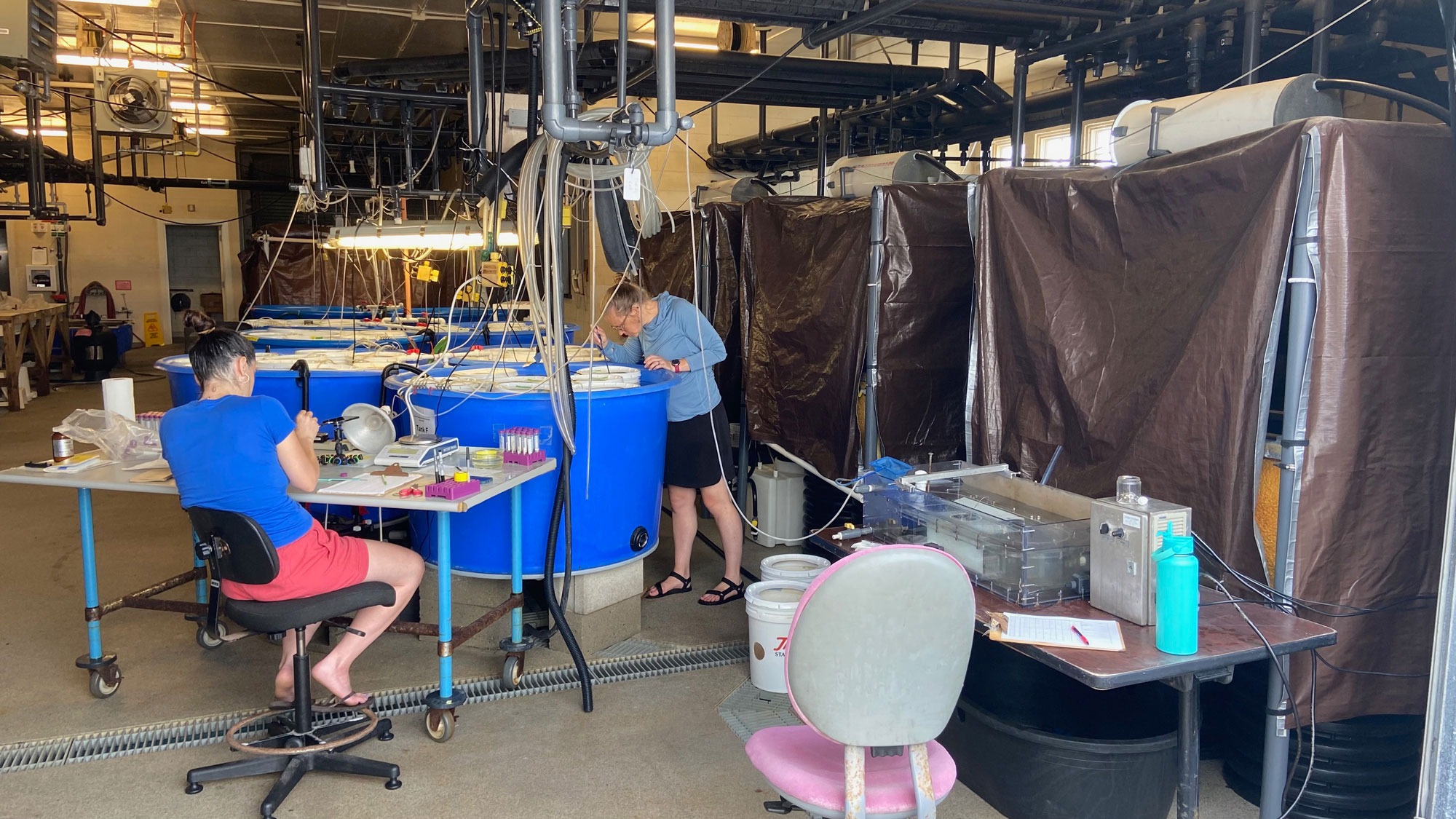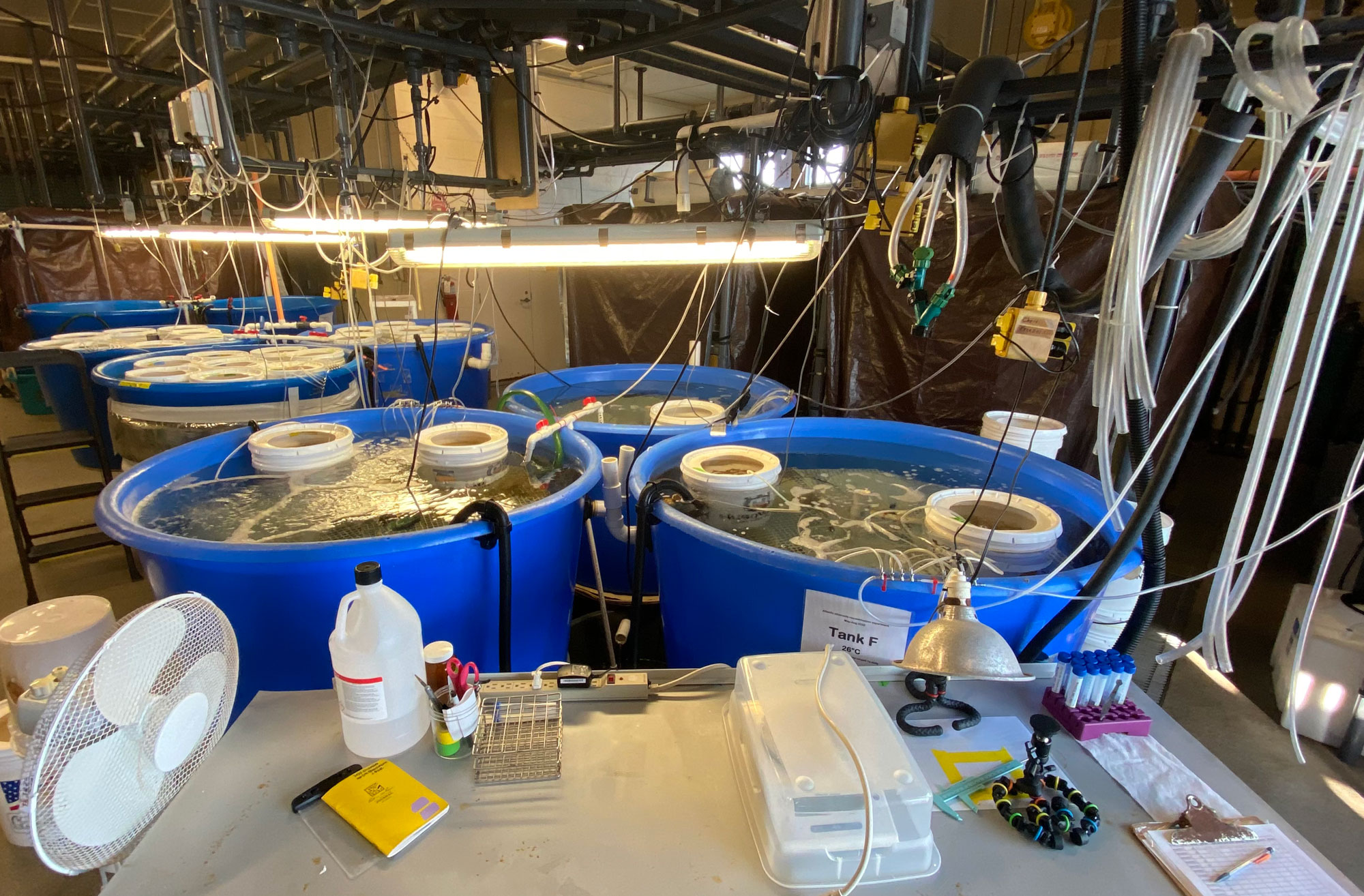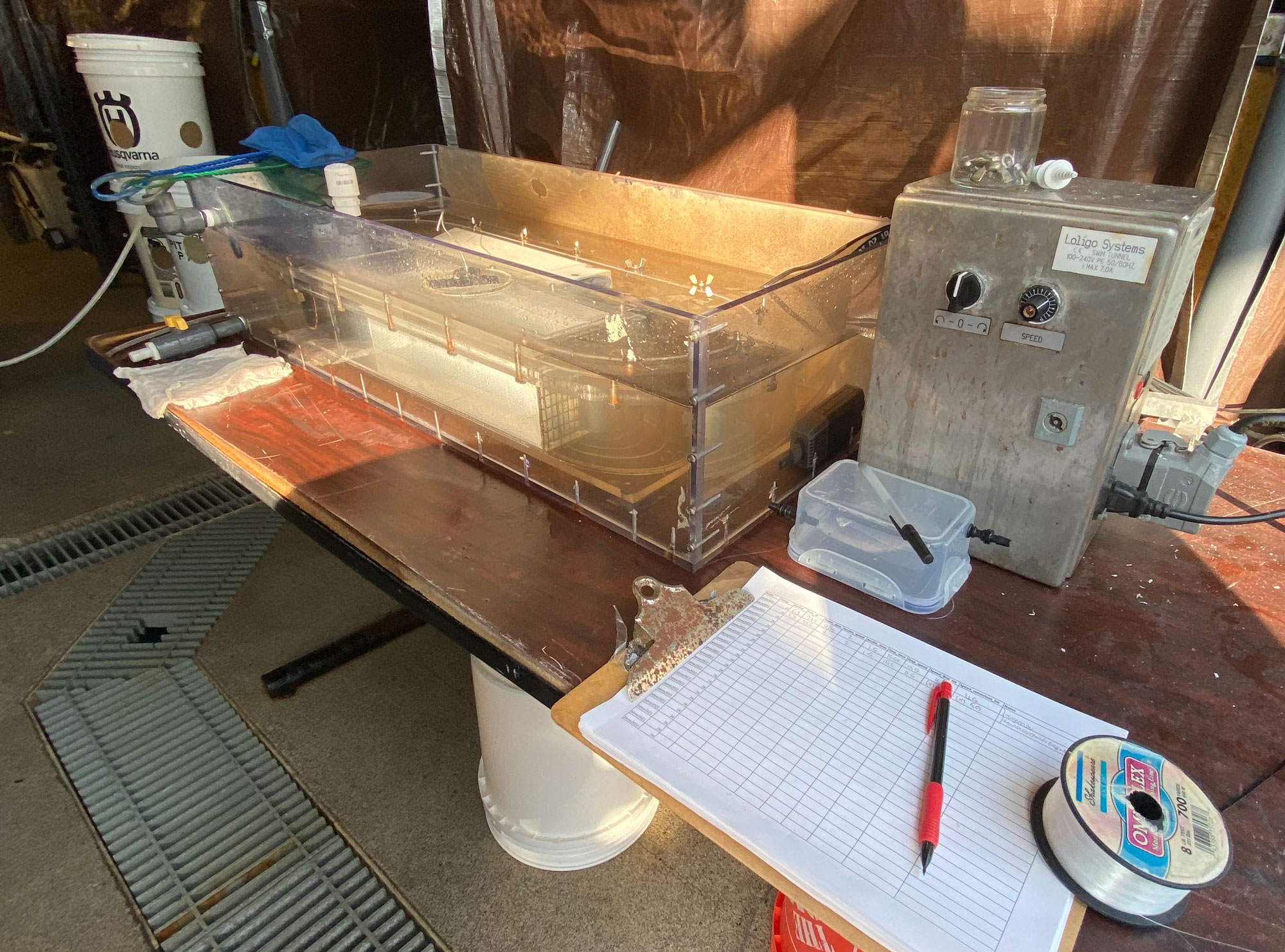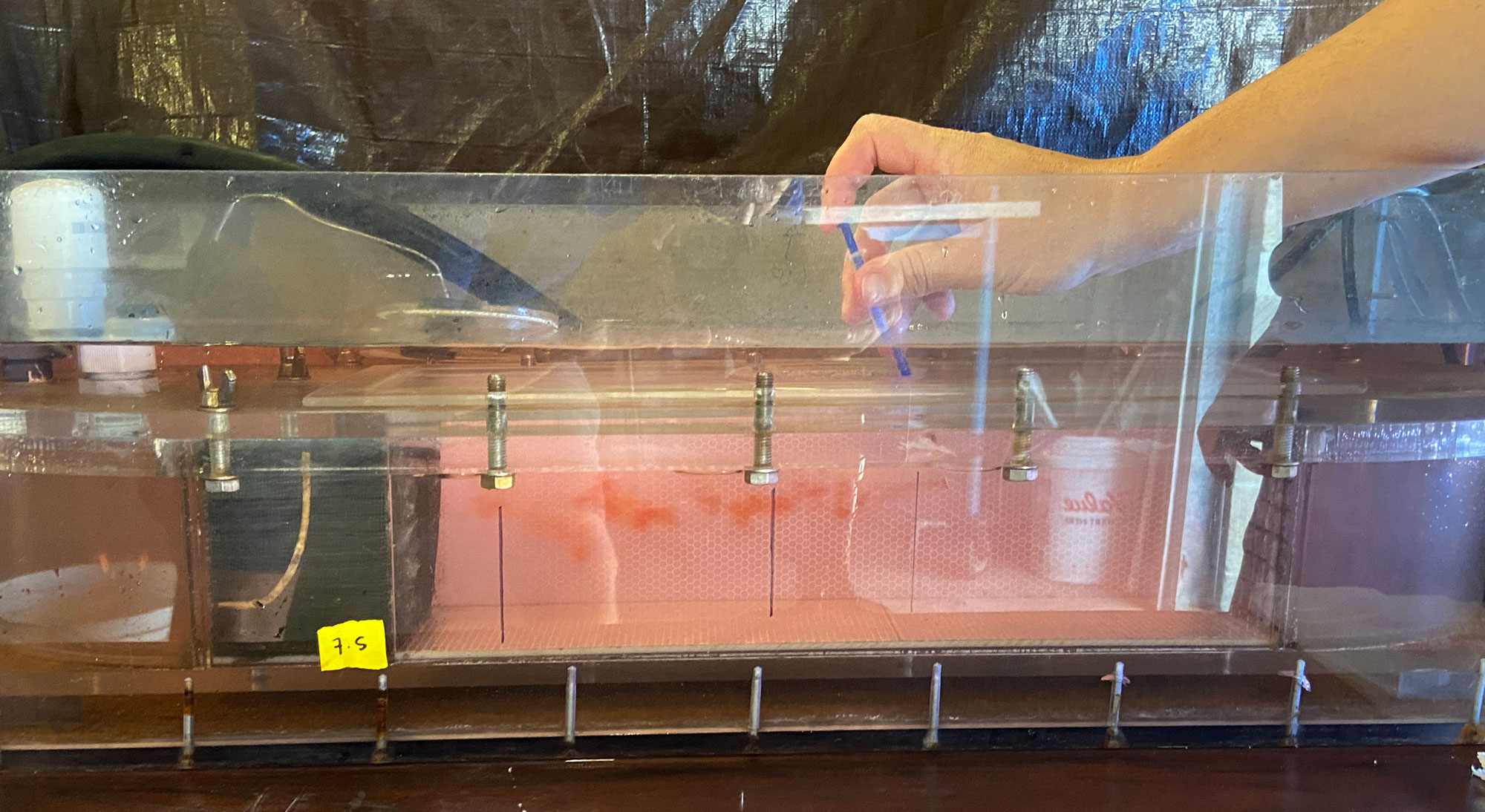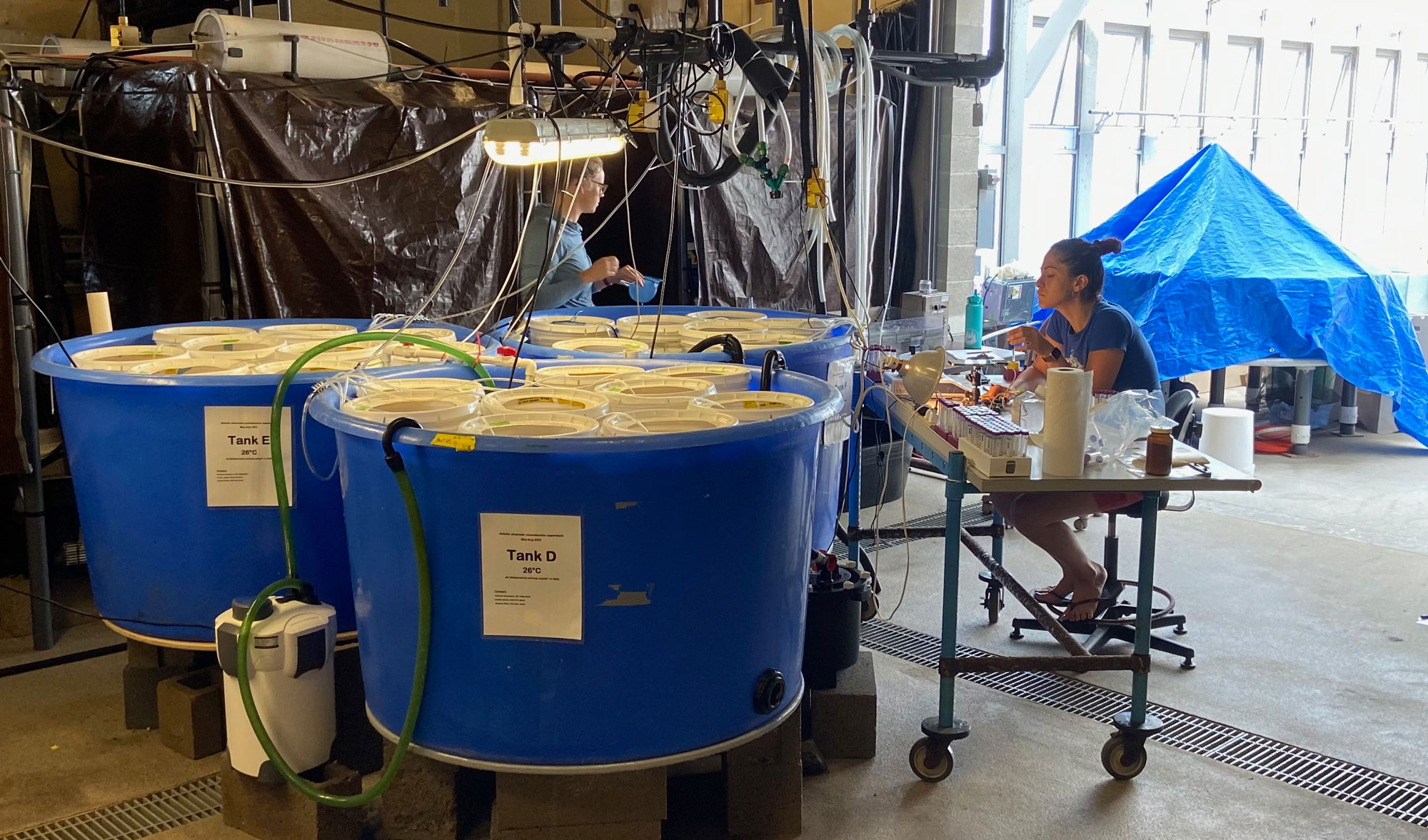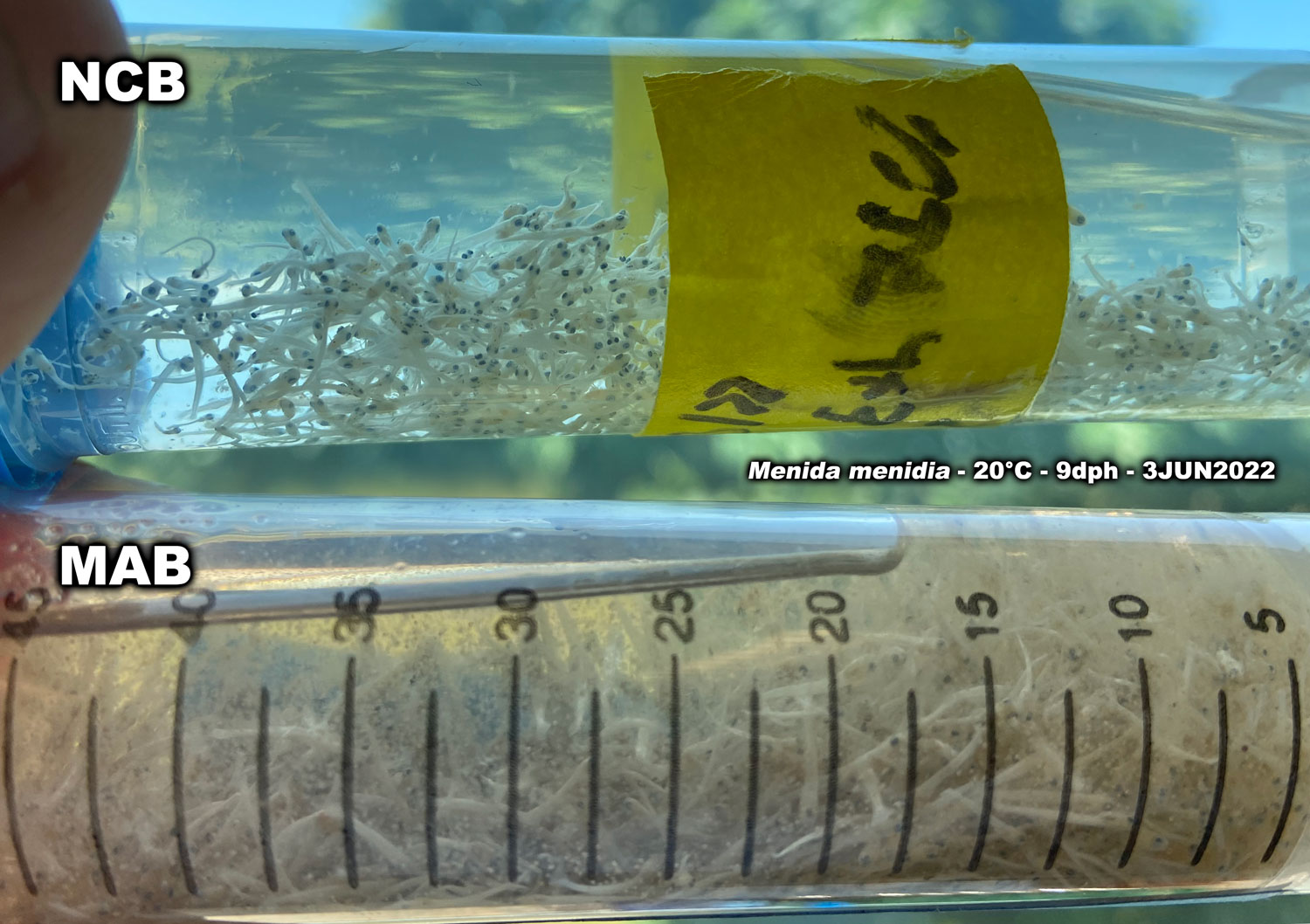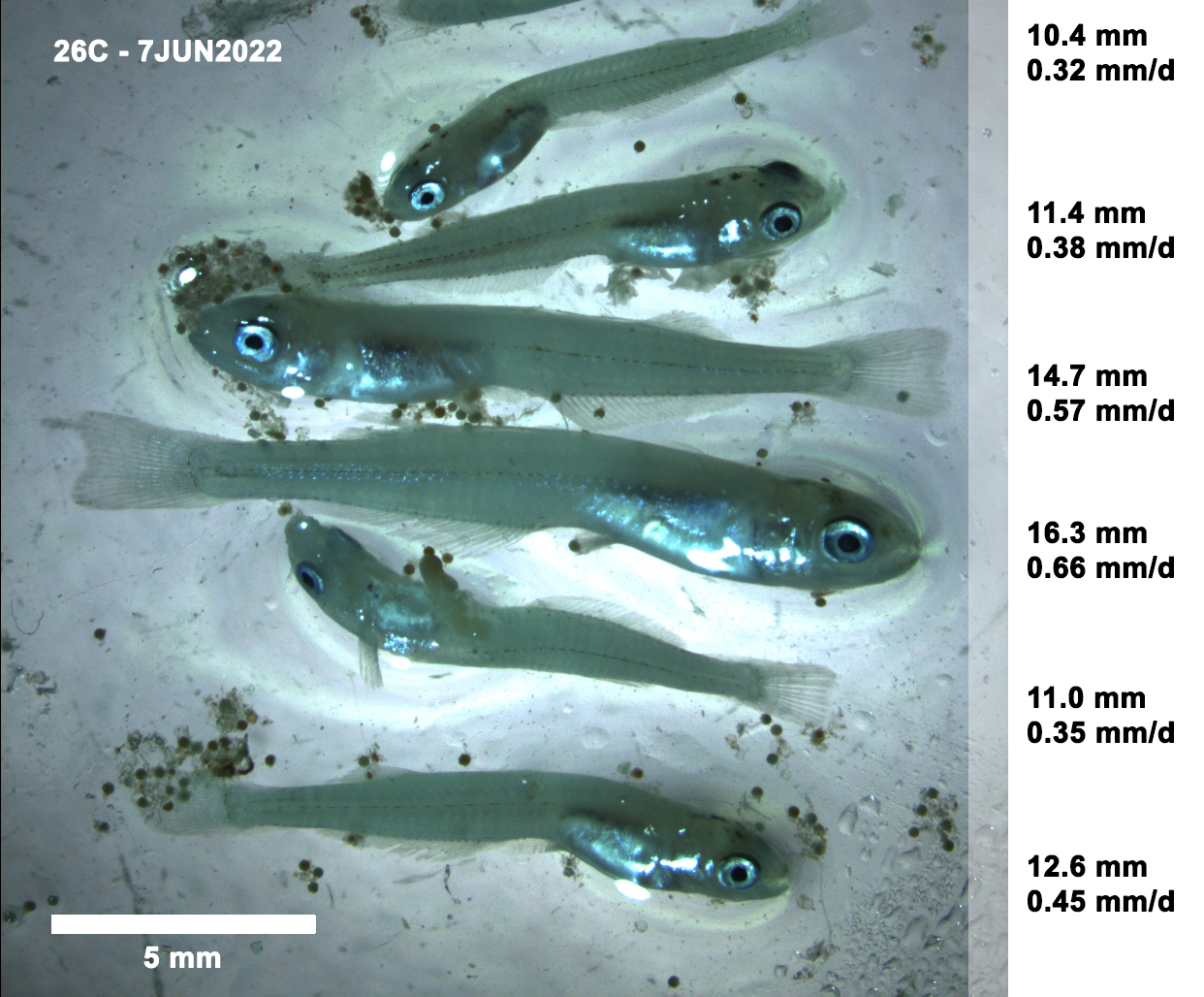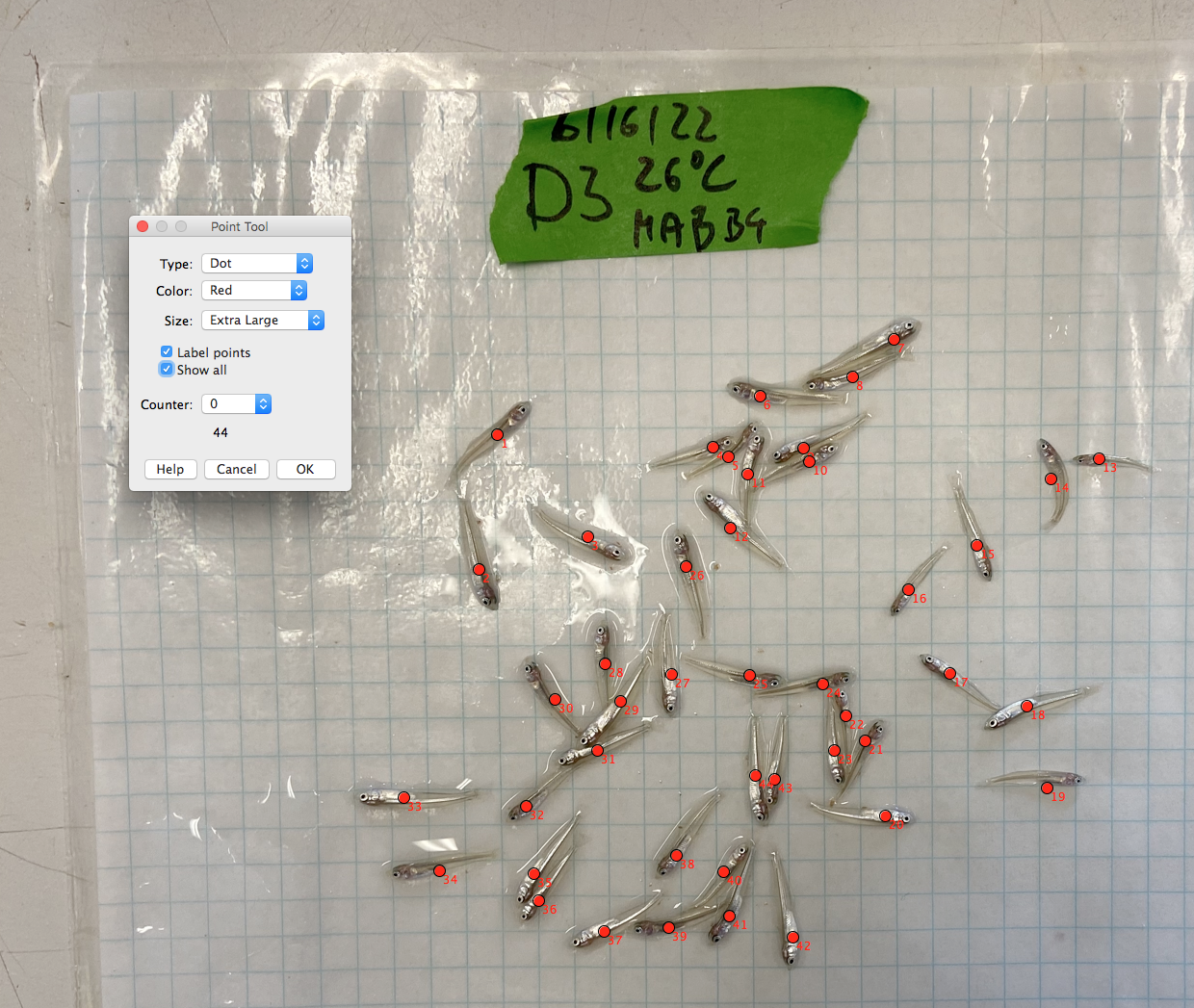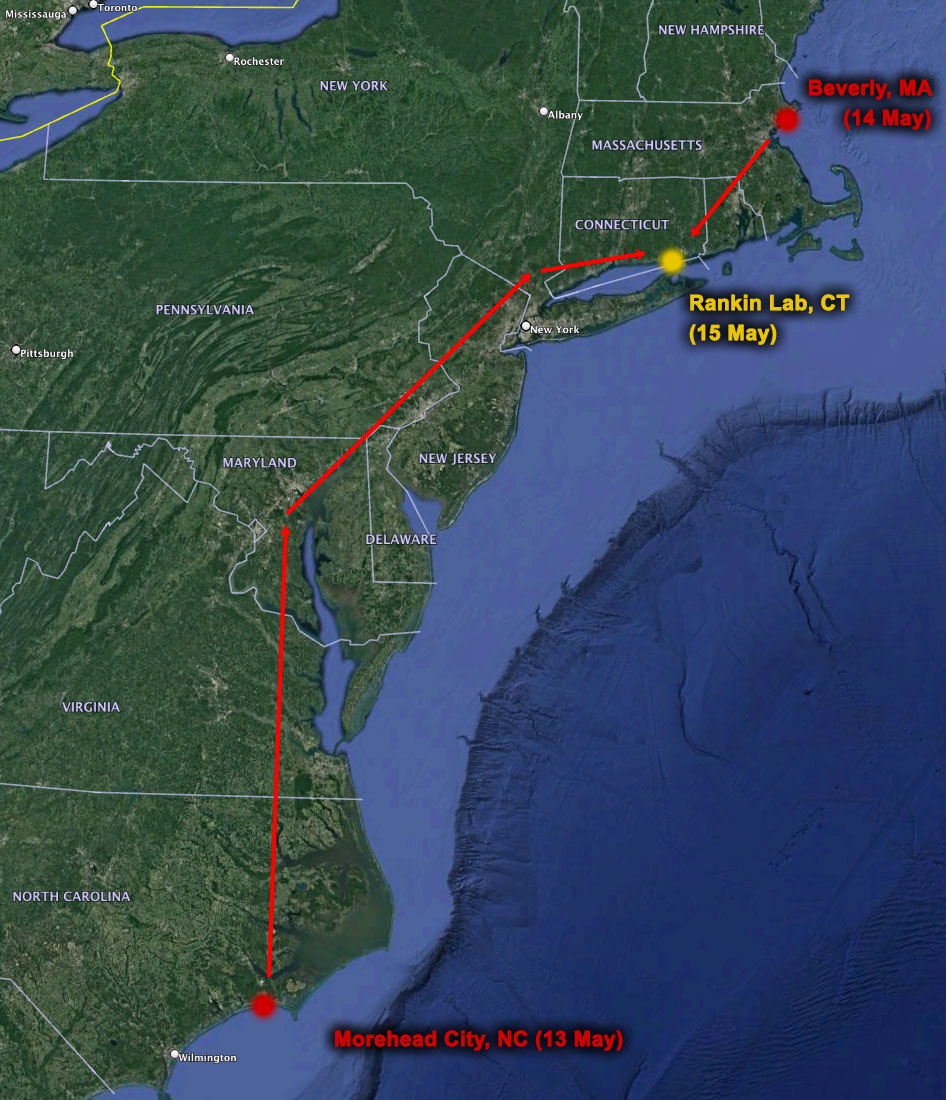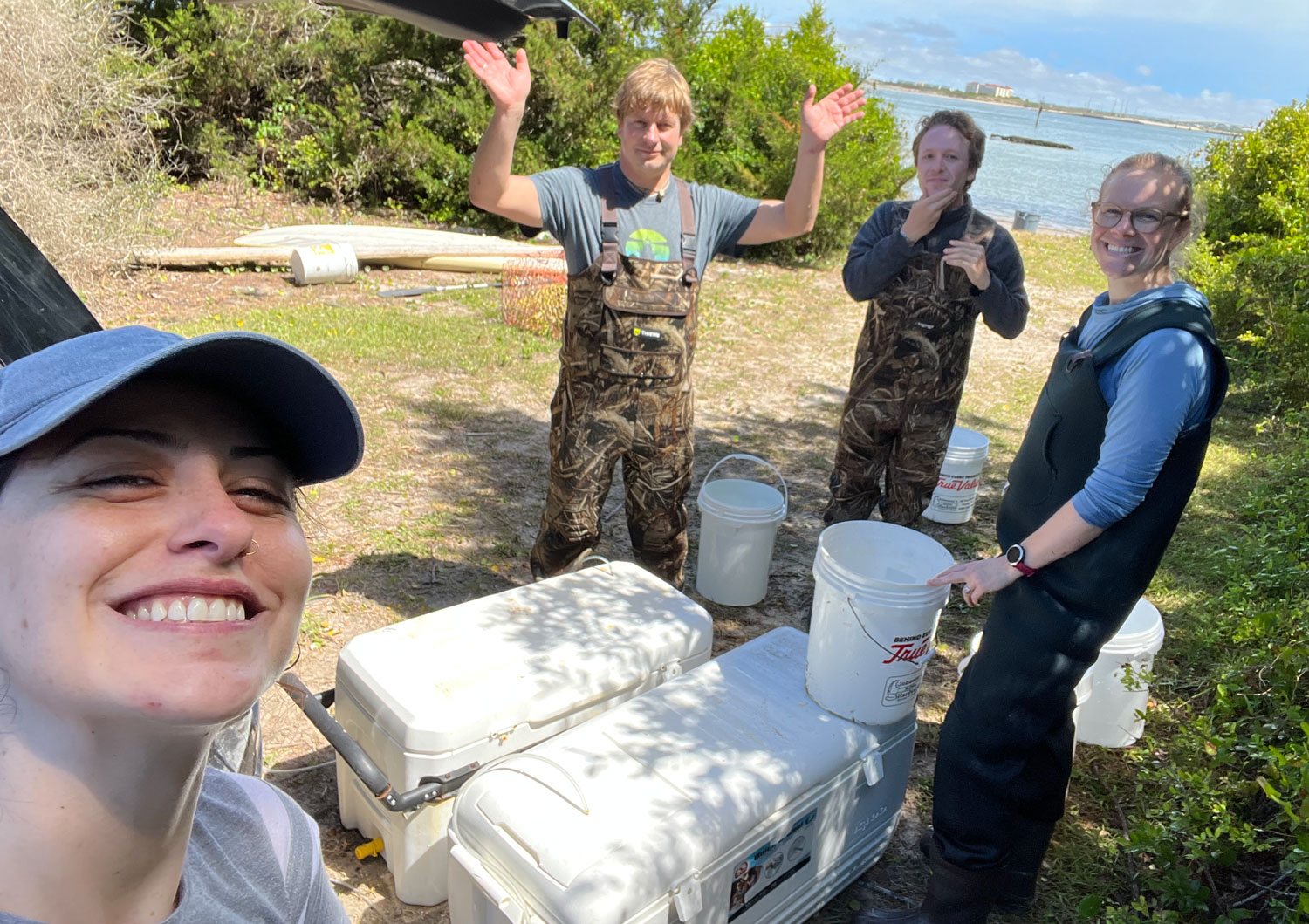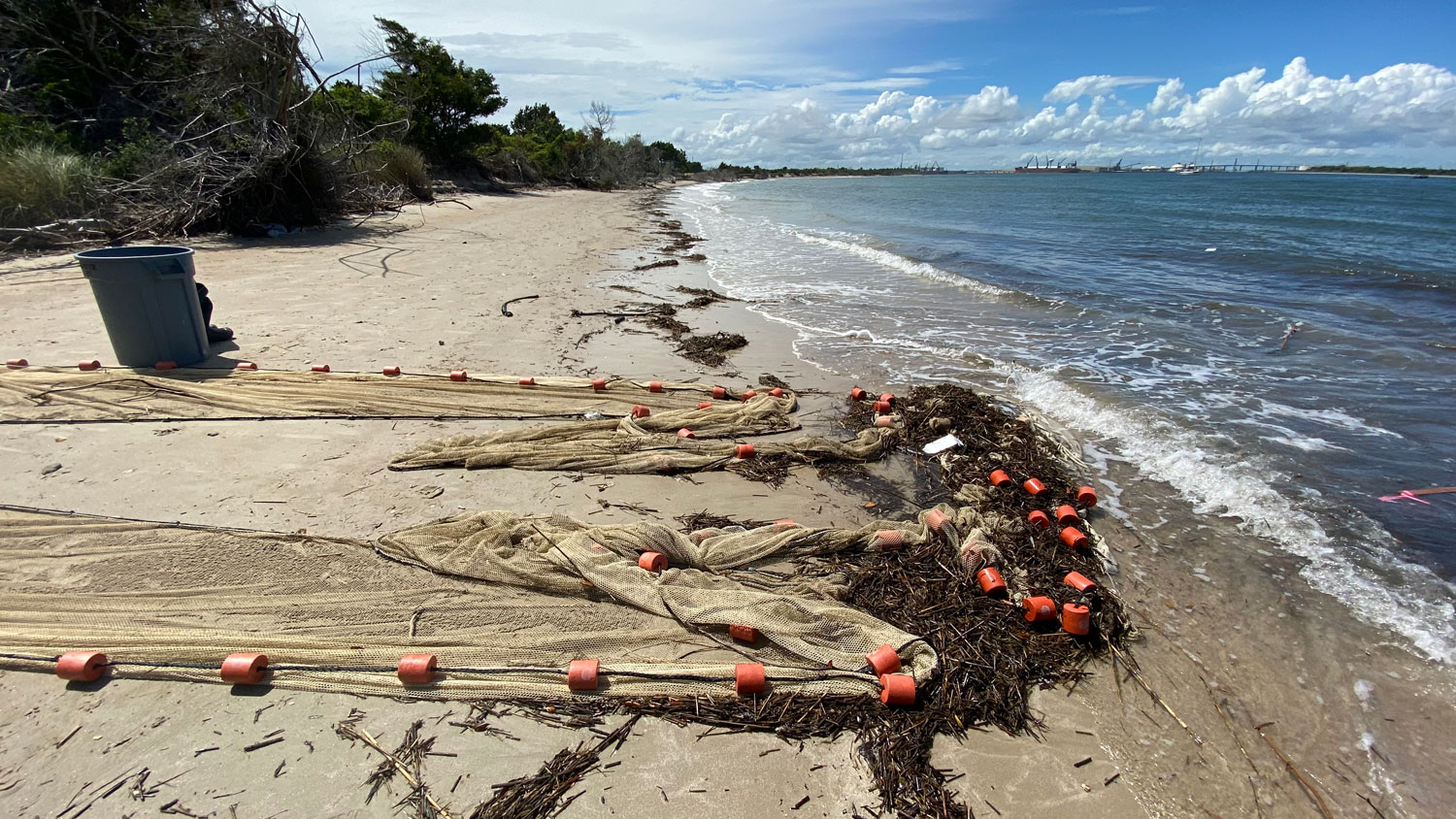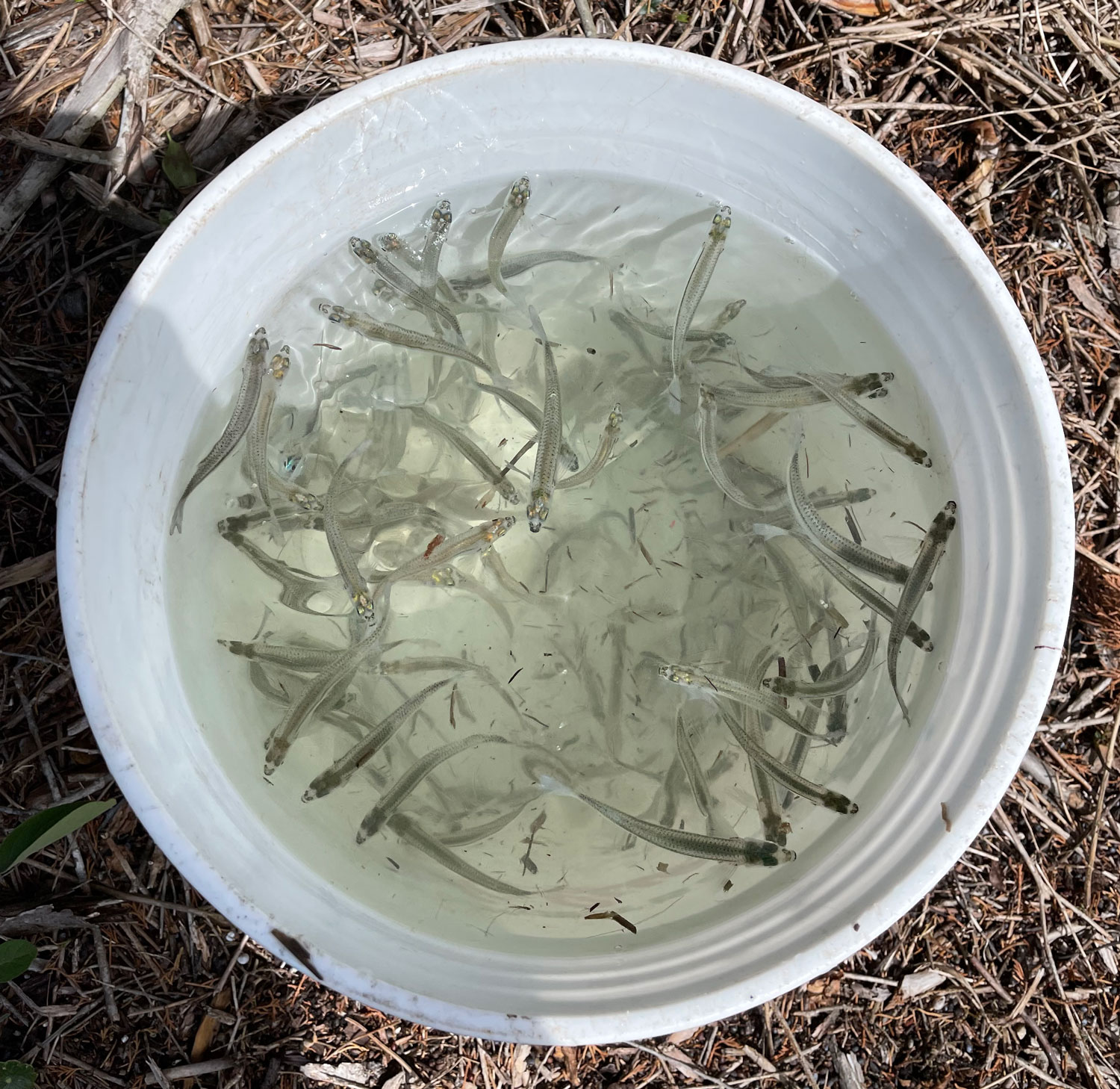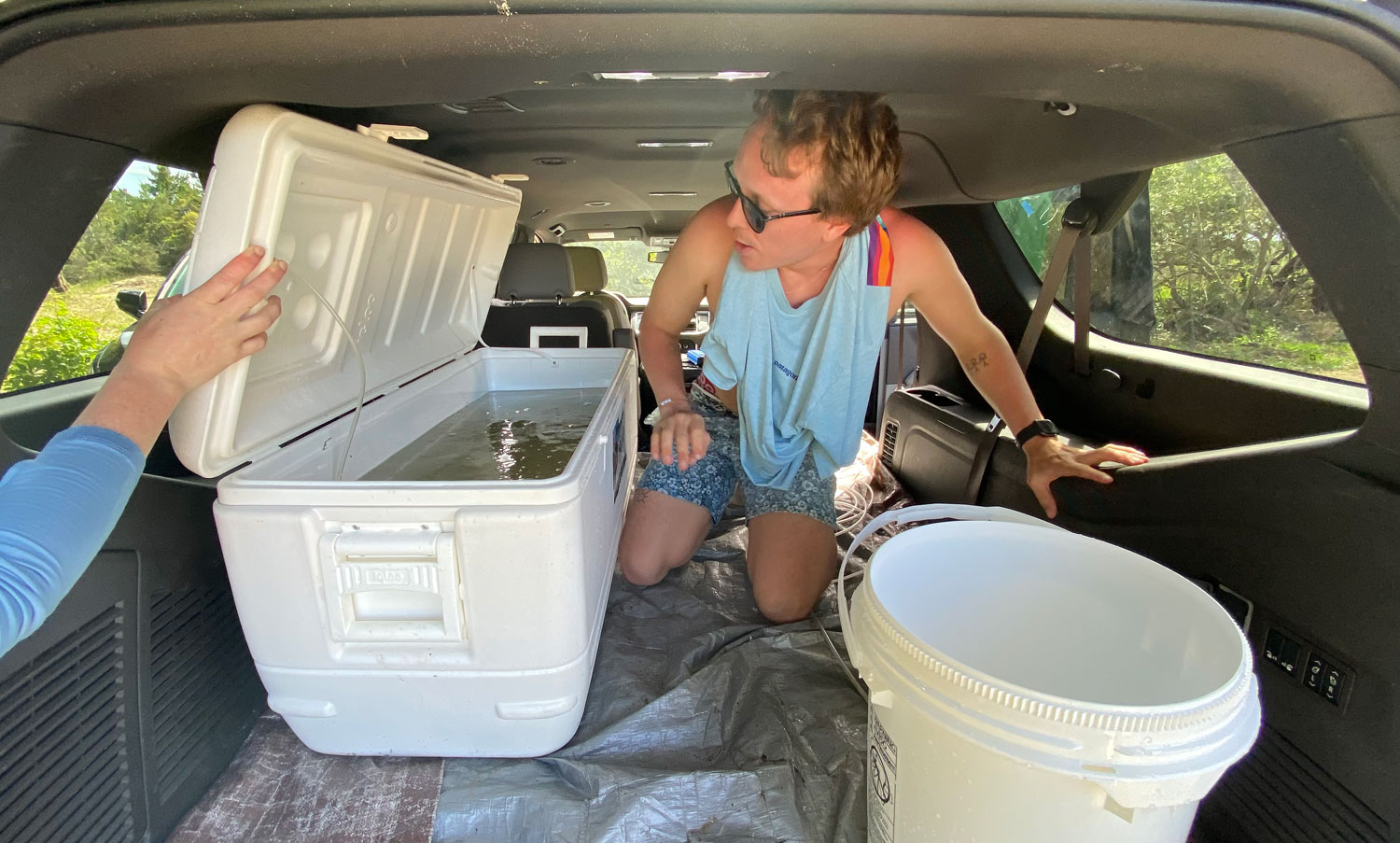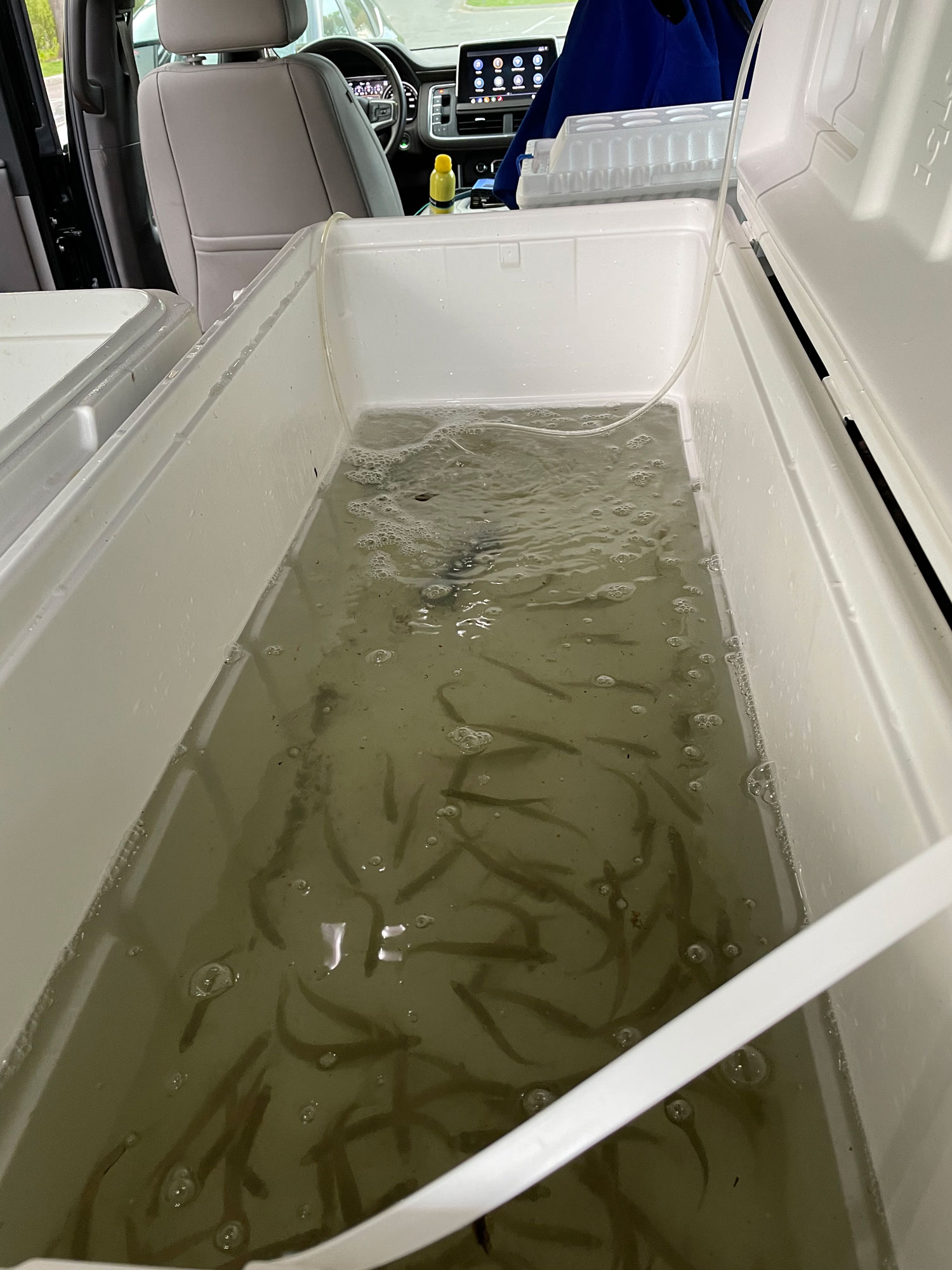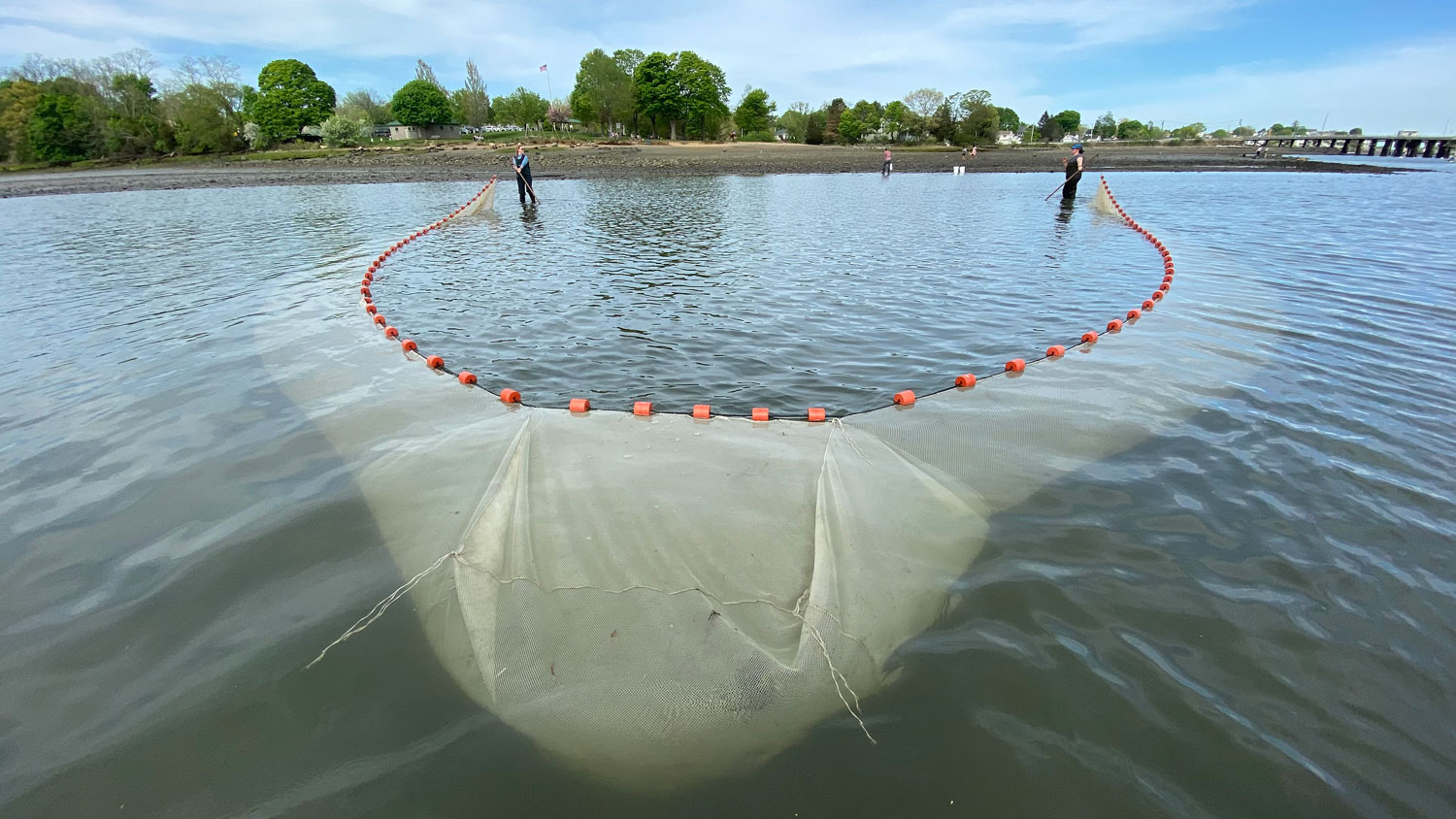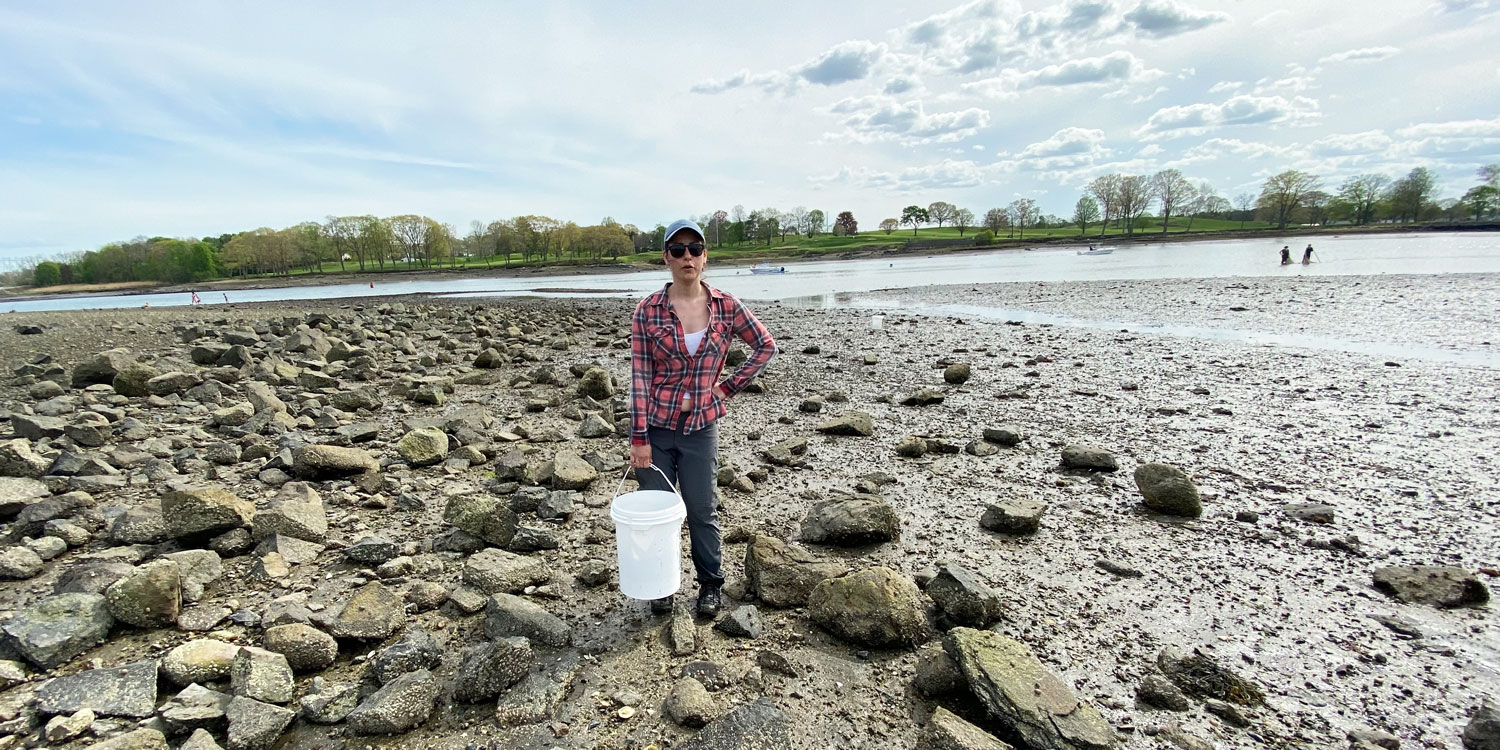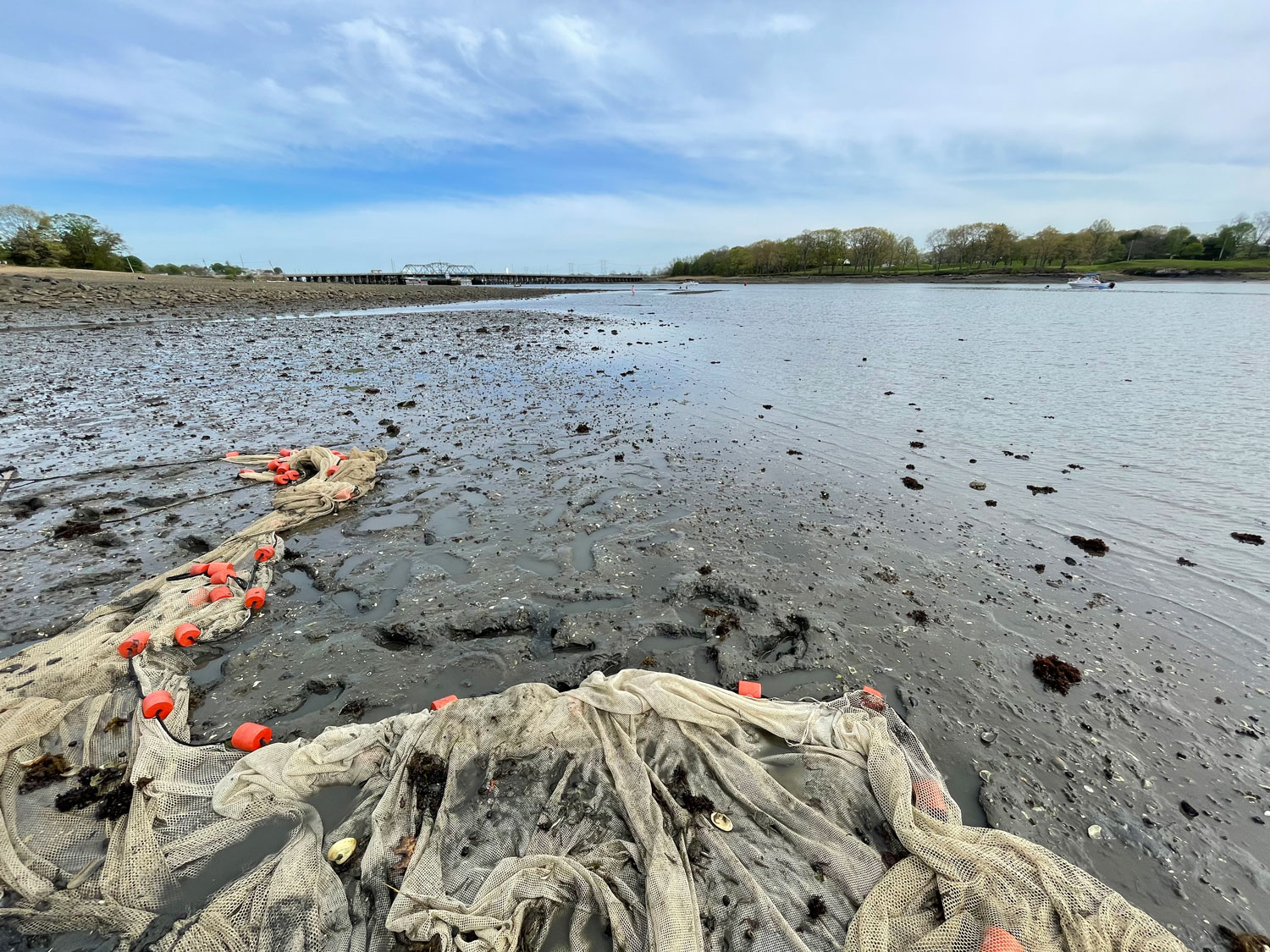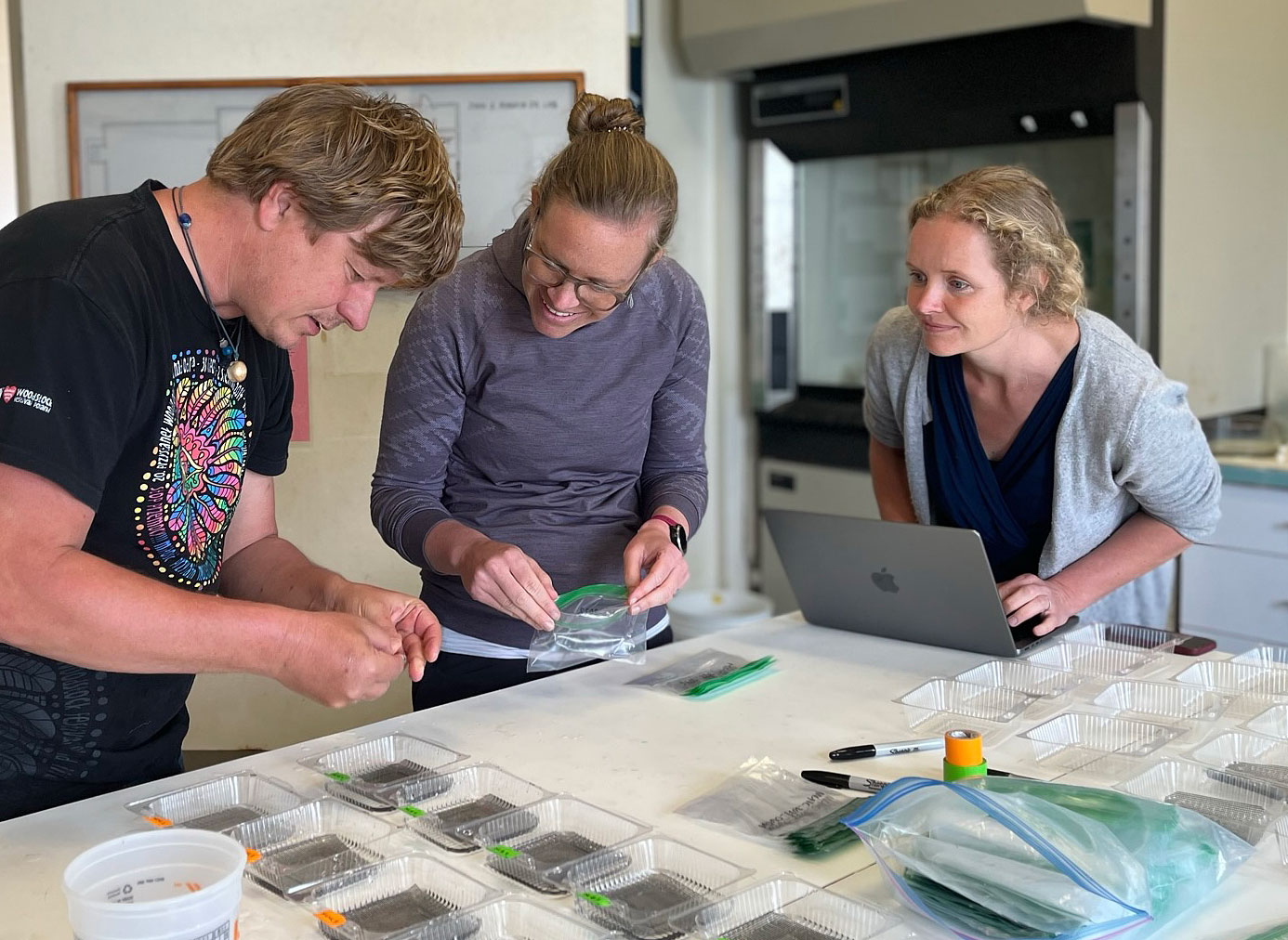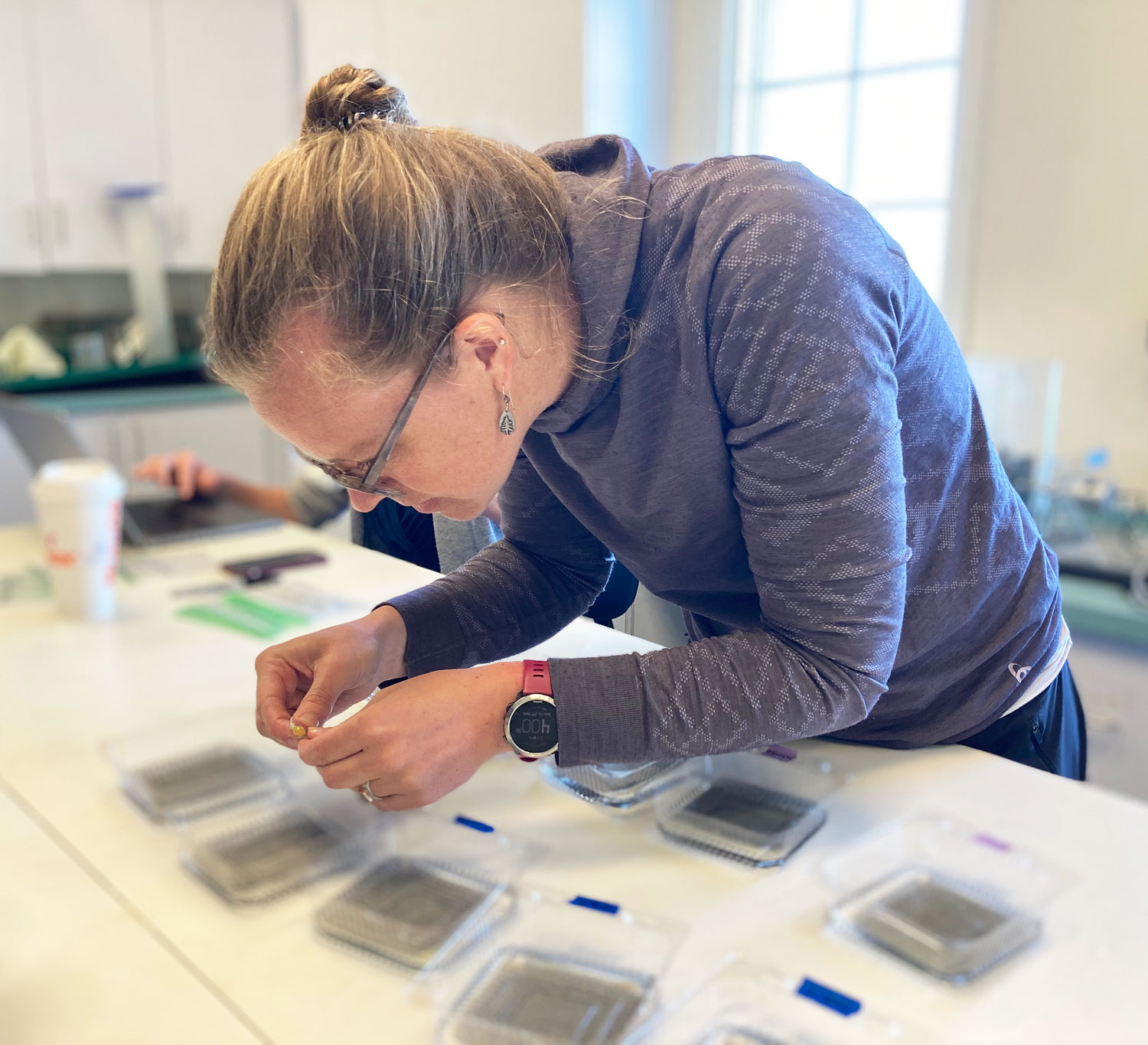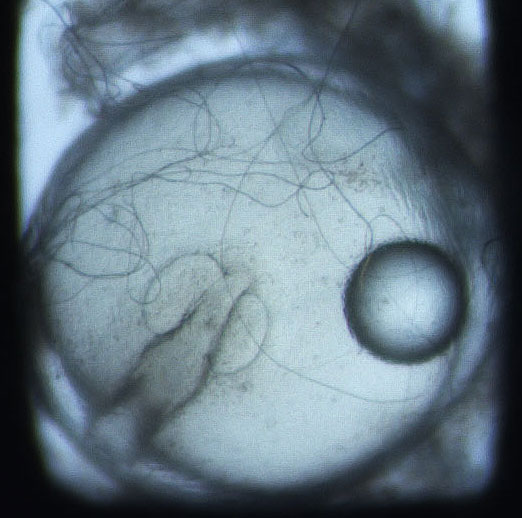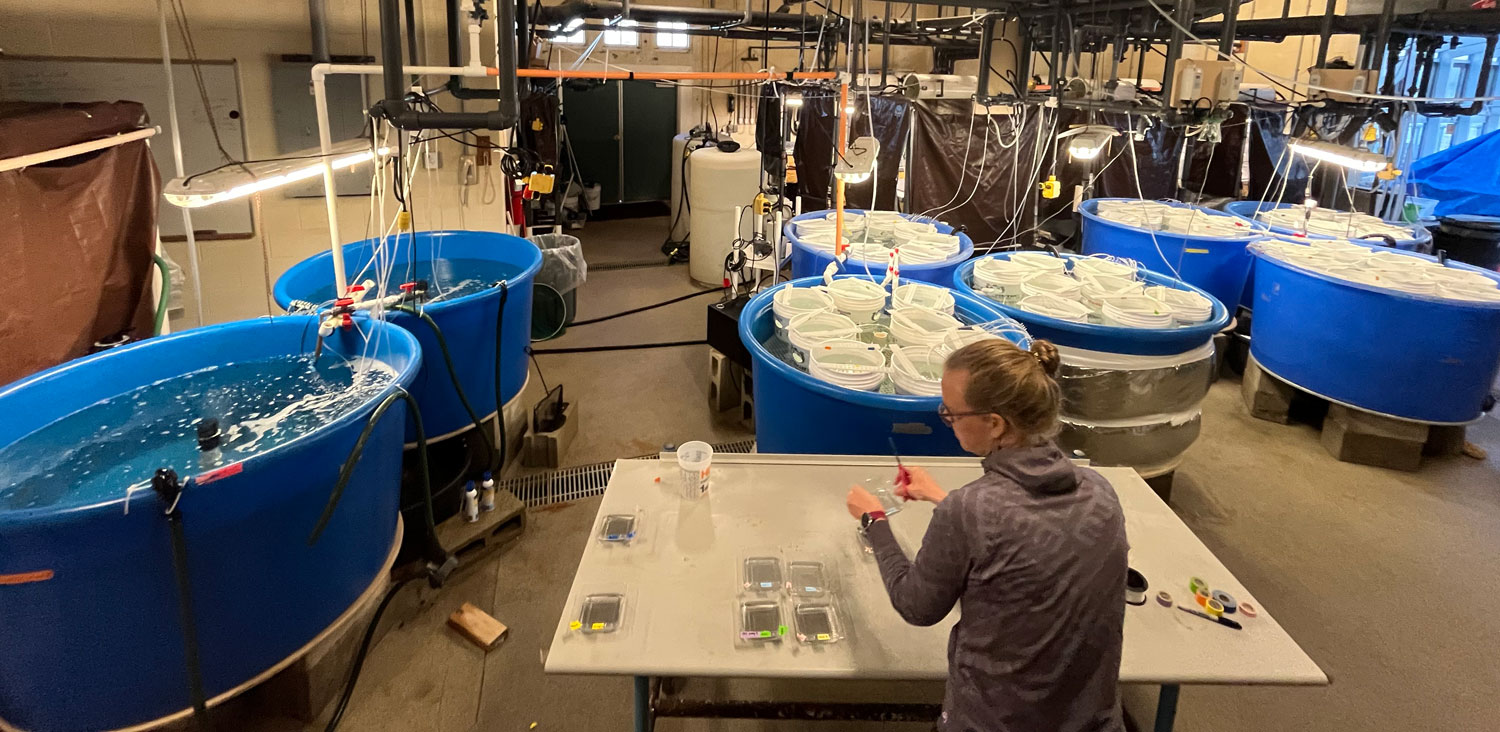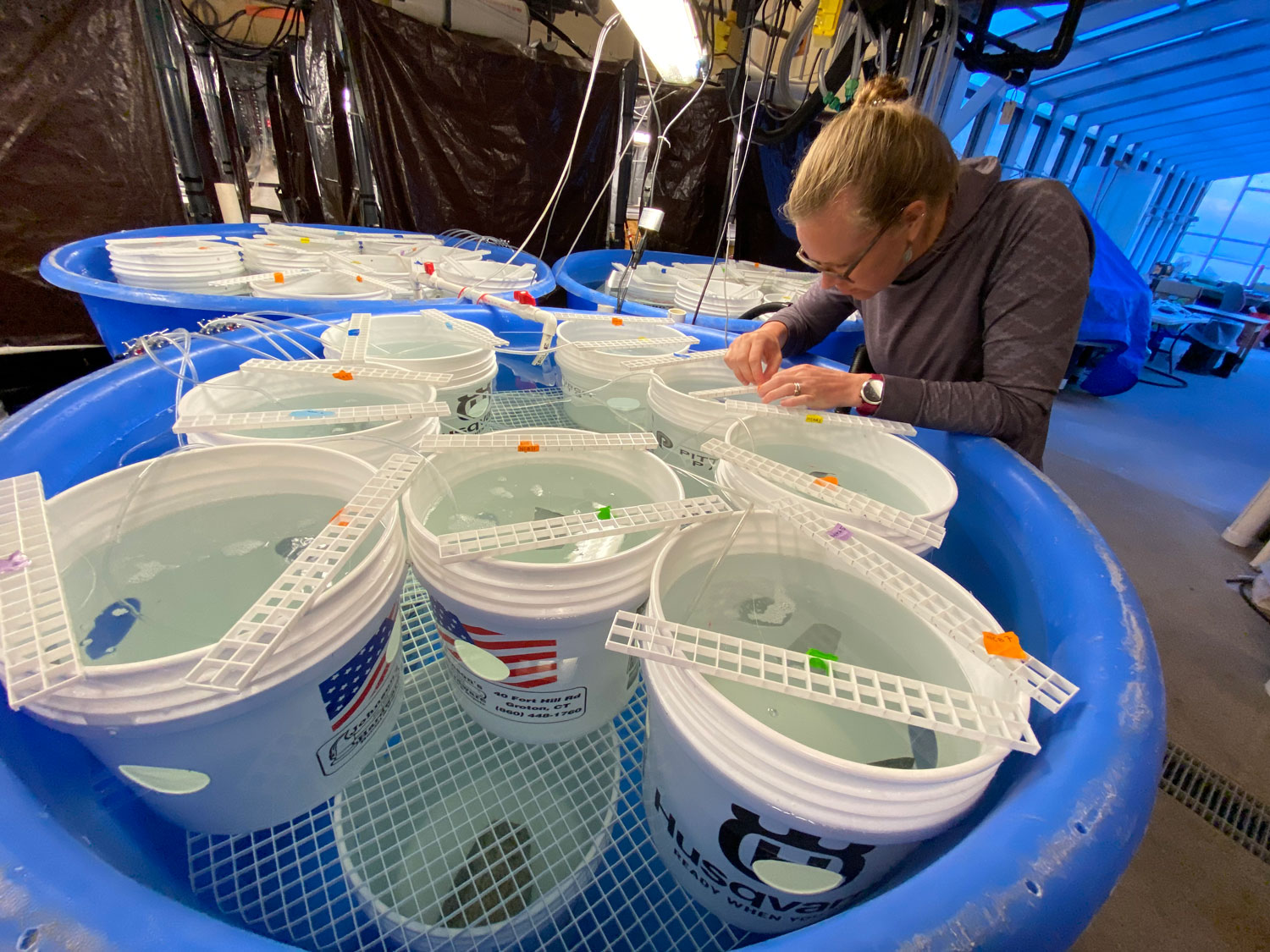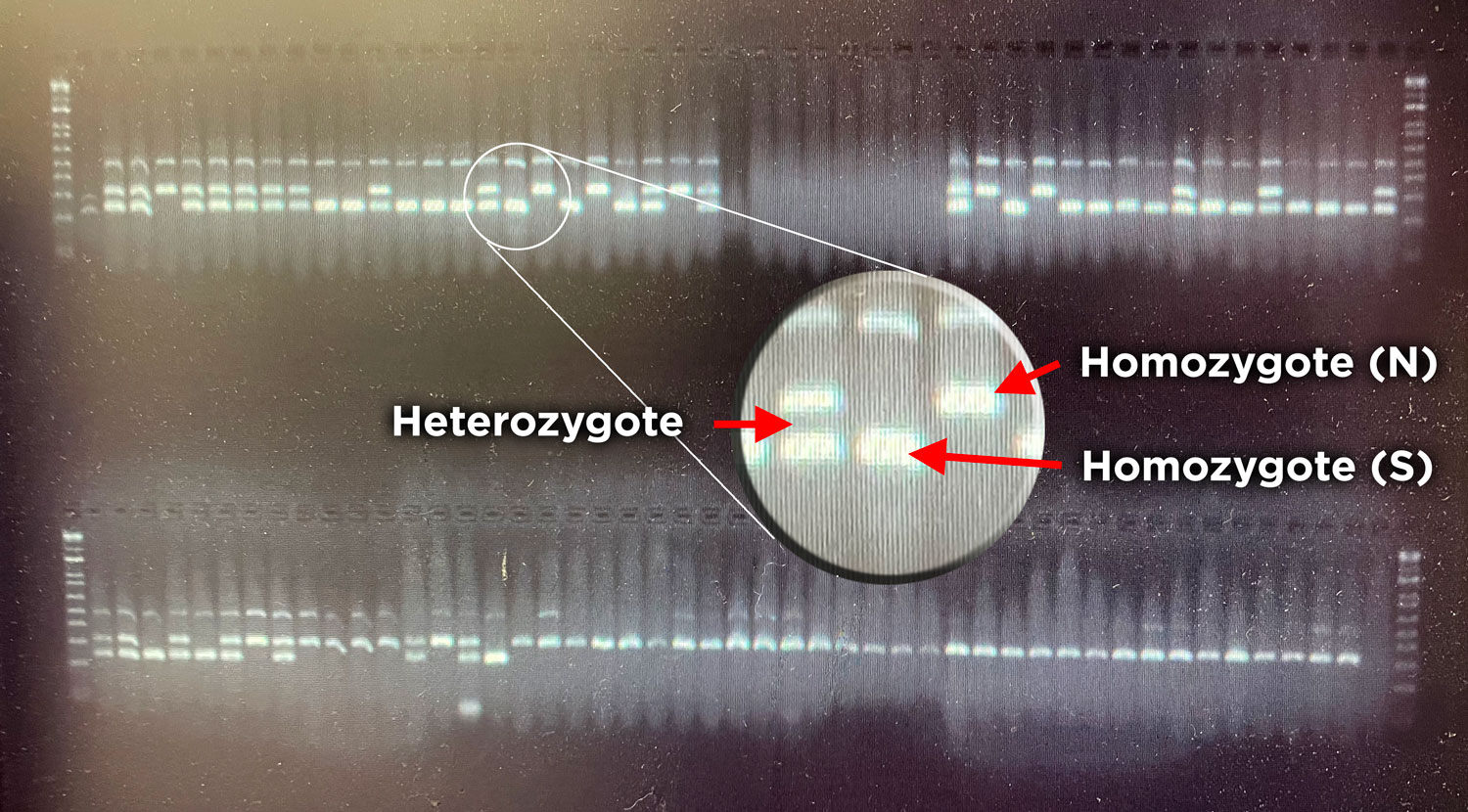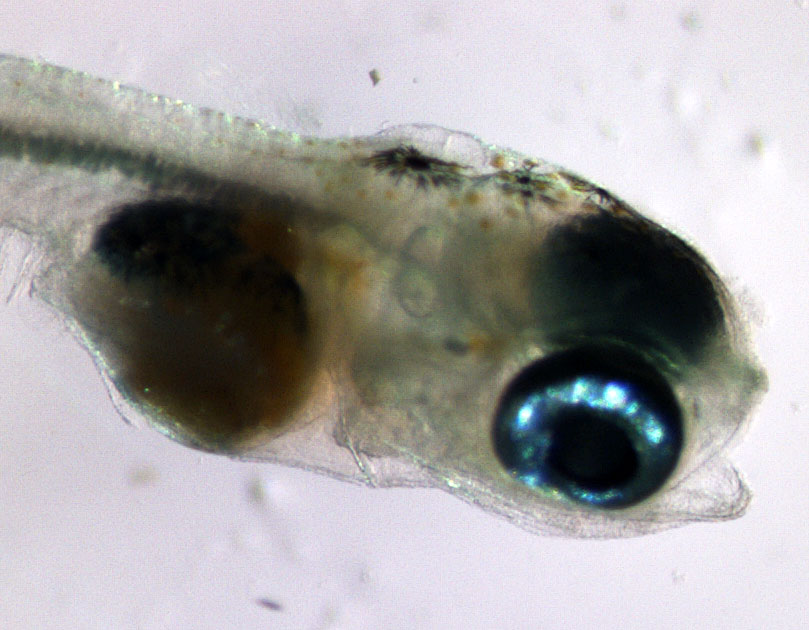Groton, 24 July 2022. A remarkable week ends with a sense of pride, accomplishment and a good dose of exhaustion. After more than two months of rearing, the silversides from our crosses in May have grown big, and at least for the warm, 26C treatment, they reached their final, intended size (~40 mm). Our rearing job came to a successful end, and now post-doctoral researcher Jessica Rick and PhD-student Maria Akopyan came back to the Rankin Lab equipped with hundreds of tubes and lots of RNAlater to finalize the sampling. This involved measuring the critical sustained swim speed of every individual fish, followed by meticulous measurements, photographs, and eventually an individual tube for preservation in RNAlater. Over the course of 9 days (and over 10h of work each day), the team measured 1,147 fish, which ranged in size between 15 and 50 mm. A big hat tip to the hard-working geneticists!
Now, our rearing job still continues until the crosses in the 20C treatment reach their final size, when the second session of phenotyping will need to happen. And of course, there iare so many more steps to follow. Stay tuned.
